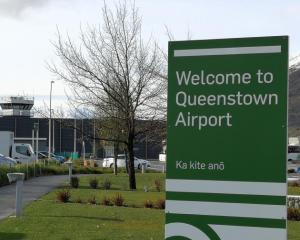
He was a third officer for the Alexandra Volunteer Fire Brigade at the time and his son Michael was only 7 weeks old when large wildfires now known as "the Alexandra fires'' broke out in February.
"It was a big year for us.''

The inferno left 8200ha of land and vegetation scorched.
The largest, the Fruitlands fire, damaged 5600ha and had a perimeter of 40km.
The fire moved quickly though the Gorge Creek area, pushed along by the wind, and burnt an estimated 10km down the valley on a 15km-long front, climbing to more than 1000m.
Sixty rural firefighters were flown in by helicopter the next day to dampen down any hot spots.
The Waikerikeri fire covered 2600ha with a perimeter of 31km.
Machinery, fences, trees and other property - including two inhabited dwellings - were consumed by fire.
At the height of the fire, two fixed-wing planes, eight helicopters and 60 fire appliances were used to battle the blaze.
No-one was injured in any of the fires.
A strong northwesterly exacerbated the situation.
Mr Hutton said near Springvale, the fire travelled up to 5km in 30 minutes.
"On that day and when we had the Roxburgh fires in 2010, strong winds, high temperatures and reduced humidity. When it crosses over it is really dangerous. You put that into the mix and you can't stop it.''
Trees at the corner of Springvale and Letts Gully Rds still show scorch marks, two decades on.
"When the wind blows it bends those flames. The trees [at Springvale] were only burned on the downwind side. The wind was so strong that it blew the fire only up the back of it.''
The Fruitlands fire was not short on surreal moments, either.
About 5pm that day, the fire had jumped Lake Roxburgh to the east shore and started burning its way up the Knobby Range.
As the "drought code'' registered over 1000 on the scale - a first in New Zealand, Mr Hutton said - more than 50 emergency fire appliances and vehicles converged on the fires, working to control and then extinguish them.
Since that day additional resources - more fire and weather stations - have been placed in the region to manage the typically dry climate of Central Otago.
Otago Rural Fire Authority principal fire officer Graeme Still said many "learnings'' came out of the 1999 event.
"It made people aware of how these things start through human intervention, mowers and the use of cooking fires.
"We don't want to tell people what to do, we just want to advise people where it's not a good day to be mowing or grinding or cooking fires in the open air.
"The systems are much better than they were 20 years ago. We've come a long way.''












